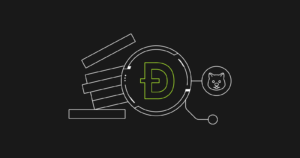
The danger of natural disasters on the homefront cannot be understated. Whether you’ve experienced a hurricane, tornado, wildfire or other type of disaster, the rebuilding process takes time and money. An example is Hurricane Ian, a 2022 Category 5 storm that caused hundreds of fatalities and an estimated $115 billion in damages, according to the National Centers for Environmental Information.
Knowing the different options you have for natural disaster finance is important when you have an unexpected event happen to your property.
Here are some places where you may be able to obtain financial assistance or tap your funds to restore your home, business or other property after being hit by a natural disaster:
Your insurance policy
If you own a home that was damaged due to a natural disaster, you should talk to your insurance company as soon as possible, says Wendy Terrill, a retirement planning counselor at Assurance & Guarantee in Burlington, North Carolina.
The quicker you file a claim, the better. And it’s important to be proactive if you’re in a disaster-prone area. You should make sure you have the necessary coverage depending on where you live, such as hurricane or flood insurance if you live along the coast.
“Always be sure to know the extent of your policies and what they do and don’t cover,” Terrill says. “Be aware, there can be time limits on how long you have to file, so it’s important to act quickly when filing a claim.”
In some cases, Terrill adds, it’s prudent to get a second opinion when totaling up the damage.
“Make sure to consult your own qualified public adjuster, not the insurance company’s adjuster, as well as an attorney,” Terrill says. “Not only can this expedite the process, it will also help protect you. Filing insurance claims can help cover costs and shore up cash savings for other things that aren’t covered by insurance.”
Family and friends
Your closest relations may be the most willing to pitch in when disaster strikes, says Justin Nabity, a wealth management advisor at Physicians Thrive in Omaha, Nebraska. “One way to get the finances you need would be to ask your friends or family for a loan,” Nabity says.
However, Nabity recommends that you should discuss a reasonable payback plan.
“The word ‘loan’ is key here,” Nabity says. “Make it clear to them that you intend to pay them back the money in full with interest over a period of time. Your loved ones care for you, and more often than not, they would love to help out someone they love whenever they can. Just don’t treat the loan like a handout.”
One plus of enlisting the help of friends and family is you can access funding as soon as possible. You could even request that they send the money via a digital payment network like Zelle or Venmo directly to your bank account so that you can get your rebuilding efforts underway quickly.
The federal government
The federal government usually makes resources available to help natural disaster victims. The type of assistance that you qualify for will depend on your unique situation. Here are some of the most common assistance programs and providers:
FEMA: Federal Emergency Management Agency
FEMA offers a variety of programs to support disaster survivors. As soon as the area is safe, FEMA will arrive to start helping impacted individuals survive the fallout of a natural disaster.
In addition to many on-the-ground programs that provide food and shelter as well as cover expenses like moving, storage and clean-up, you could receive FEMA unemployment assistance. Typically, any unemployment benefits related to a disaster will be paid for up to 26 weeks.
If you want to apply for FEMA assistance or explore your options, head to the FEMA Disaster Recovery Center (DRC). These mobile offices are set up after a disaster to help the affected residents navigate the crisis. For complete information, go to FEMA’s website.
Small Business Administration Disaster Assistance
As a business owner who was affected by a declared disaster, you can access resources provided by the Small Business Administration (SBA). You will find four types of loans available after a disaster: physical damage loans; mitigation assistance; economic injury disaster loans; and military reservist loans. These loans cover things like home repairs, a business owner’s operating expenses and other financial hardships you might suffer.
You can take advantage of these loan opportunities to help you weather any financial storm, if you have a small business affected by a declared disaster.
IRS: Internal Revenue Service assistance
The IRS, better known for tax collection, is usually not associated with offering a helping hand. But the IRS may be able to help to alleviate some pressing bills. For example, you may receive an extension on your tax payment deadline. That could be a big help if you are running low on funds while rebuilding after a natural disaster.
DAIP: Disaster Assistance Improvement Program
DAIP is a lesser-known federal entity that can help you get back on your feet following a disaster. The goal of DAIP is to help you find the resources you need more easily.
If you are tired of reading through an alphabet soup of agency programs to find the pertinent information, then head to DAIP’s Find Assistance page. You can enter your information on the site and receive a unique list of resources and assistance programs that could help you – and save you a lot of time.
Your life insurance policy
If you have a cash value life insurance policy, now may be the time to borrow from it. (You can’t borrow from a term life policy, as it only pays out upon death.) You could cover necessary rebuilding expenses with the cash that you withdraw from your cash value life policy. And there’s no application required to gain use of your money.
If you don’t pay back the money you took from your life insurance policy, however, it will reduce the value of your death benefit, notes Sean Fox, chief revenue officer of personal finance company Achieve. “Paying the money back is not required, but any amount not paid back will be deducted from whatever goes to beneficiaries,” Fox says. So, keep that in mind as you move forward.
CDs, savings bonds and mutual funds
If you have money tucked away in a certificate of deposit (CD), mutual funds or savings bonds, you could pull cash out now. Note that withdrawing money early from some accounts may result in an early withdrawal penalty.
Talk to a bank representative or a financial advisor to better understand your options if you need to pull money out of these savings vehicles.
529 college savings
If you have contributed money to a 529 college savings plan for your child, then you could tap into those savings. However, you may incur a 10 percent penalty on the earnings portion of your account for any withdrawals. With that, a 529 withdrawal should be a last resort.
In addition to the 10 percent penalty, you’ll have to pay state and federal income tax on these withdrawals.
Retirement accounts
Another place to access needed cash is in retirement accounts, such as a 401(k) plan, notes certified financial planner Kyle Eaton. “401(k) plans allow participants to take out loans,” Eaton says. The maximum amount you can borrow from your plan is 50 percent of your vested balance or $50,000, whichever is less, according to the IRS.
For instance, if your 401(k) had a (vested) balance of $60,000, the maximum loan that you could take is $30,000, Eaton says.
The major drawback of these distributions is that you will have to repay the account that you took the funds from. Additionally, it could delay your retirement by derailing your savings goals.
Non-government organizations (NGOs)
NGOs, which are often non-profit organizations, often show up to provide help when a natural disaster strikes. Many are able to provide the money and resources needed to rebuild.
Take some time to research the NGOs that are offering assistance in your area. You might be surprised to find a helping hand just around the corner. Examples of NGOs include the International Red Cross, Doctors Without Borders and REACT International.
Bottom line
A natural disaster can turn your world upside down, quite literally. However, there’s a good chance you won’t have to rebuild alone. Many organizations and individuals are available to help you get back on your feet and create a new normal.
– Bankrate writer Karen Bennett contributed to an update of this story.
Copyright 2023 Bankrate, Inc. ALL Rights Reserved.
This story was originally published December 22, 2023, 1:01 PM.
source: star-telegram








